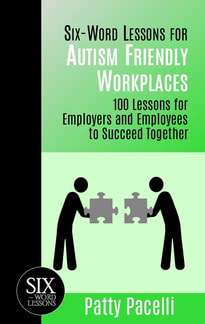SAP, a worldwide leader in enterprise software solutions, is tapping into the extraordinary observation and concentration characteristics of people with autism to do software testing. SAP has pledged that 1% of their global workforce will be autistic by 2020 (source: SAP). Organizations such as IDF, SAP, Microsoft, Walgreens, and Freddie Mac have recognized the extraordinary strengths that many people on the Autism Spectrum possess. This is not a corporate goodwill gesture; these organizations are looking to improve bottom line results and see people with autism as a means to help them get there. The Center for Disease Control (CDC) reports that about 1 in 68 children have been identified with autism spectrum disorder (ASD), that it occurs 1 in 42 among boys and 1 in 189 among girls and occurs among all racial, socioeconomic, and ethnic groups (source: CDC). This is up from 1 in 150 occurrences in the year 2000. Our son Trevor was diagnosed with high-functioning autism at age 5. It initially showed as delayed speech and continued with social awkwardness and other emotional and communication difficulties. Even as a toddler, Trevor showed tremendous abilities to focus through activities like puzzles and, in his passion areas, he could memorize and recite the most detailed of facts. As he grew, his passions shifted to movies and photography. During his first two years in junior college he majored in film studies and eventually got a BA cum laude in film & media studies from Arizona State University. Trevor worked for us for a year after college while he looked for outside employment. He now works full time, lives on his own, and pays his own bills. In addition to working full time, Trevor loves writing movie reviews and helps with marketing his and other books on autism. Having Trevor as an employee has been a terrific experience for all of us, but at the same time I've learned that after 30+ years working for companies such as Microsoft and Accenture that a leader needs to be mindful of how a person with autism thinks and works. The changes I needed to make weren't massive enough to completely retool my leadership toolbox; but they were important enough that I had to consciously act to ensure our styles meshed. If your company is embarking on an initiative to hire more people with autism, now is the time to act. Take a look at these 15 tips which have worked for me and may help you create the most supportive and productive environment for your employee with autism (Note: there are two schools of thought as to how to refer to a person with autism. There is the "person first" camp who say "person with autism." There is the "identify first" camp who say "autistic person." Neither term is universally correct nor incorrect. I use both terms with no intent to offend).
1 in 68 are born on the autism spectrum. These children grow into adults and will be a key workforce asset. If you are or will be managing someone with autism, get prepared so you can get the most out of the relationship and help your employee with autism thrive and drive results for you and your organization. Want Lonnie to give a keynote to help your leaders more effectively manage employees with autism? Email Lonnie to get the ball rolling! Lonnie Pacelli Keynote Speaker | Board Director | Autism Advocate | Author | Project Management Expert | Microsoft/Accenture Veteran See his books on Amazon.
0 Comments
Leave a Reply. |
Topics
All
Reprints
Contact Lonnie about article reprints. Please specify article you wish to reprint. Backlist
See Lonnie's Amazon Author Page Archives
July 2024
|
Lonnie Pacelli - Building Thriving Leaders™
Insightful | Creative | Direct Advice to Help Leaders Help Themselves
Keynote Speaker | Board Director | Autism Advocate | Author | Project Management Expert | Microsoft/Accenture Veteran
See his books on Amazon
Insightful | Creative | Direct Advice to Help Leaders Help Themselves
Keynote Speaker | Board Director | Autism Advocate | Author | Project Management Expert | Microsoft/Accenture Veteran
See his books on Amazon
Services |
About
|
© COPYRIGHT 2019. ALL RIGHTS RESERVED.
We are a participant in the Amazon Services LLC Associates Program, an affiliate advertising program designed to provide a means for us to earn fees by linking to Amazon.com and affiliated sites.
|


 RSS Feed
RSS Feed